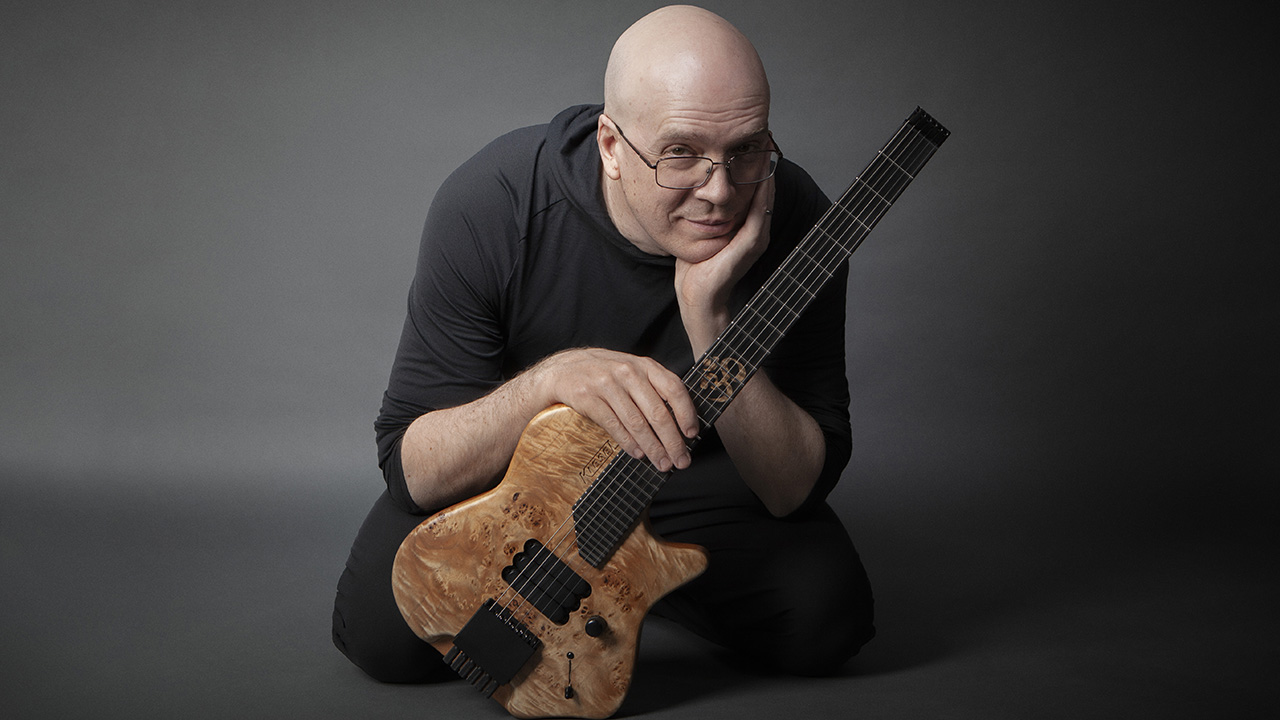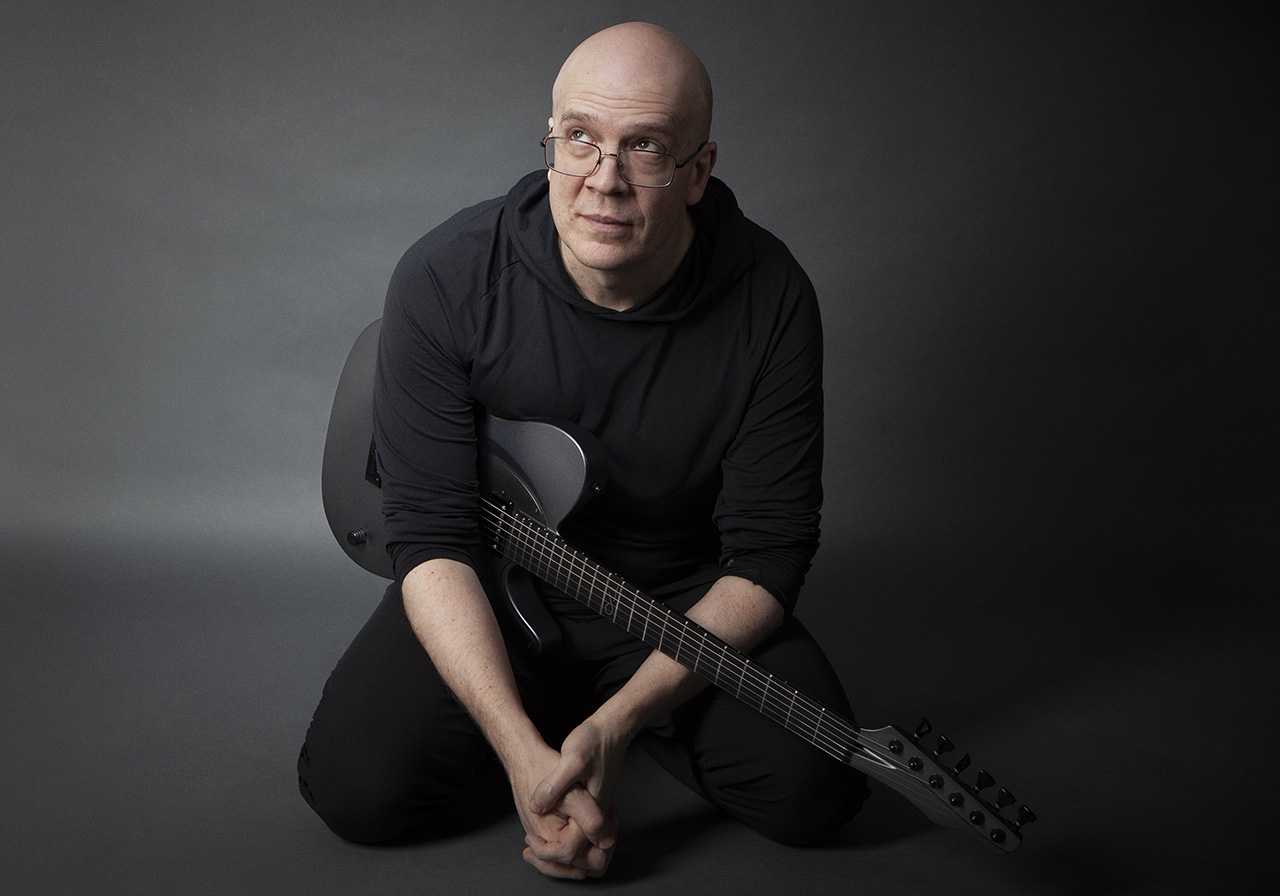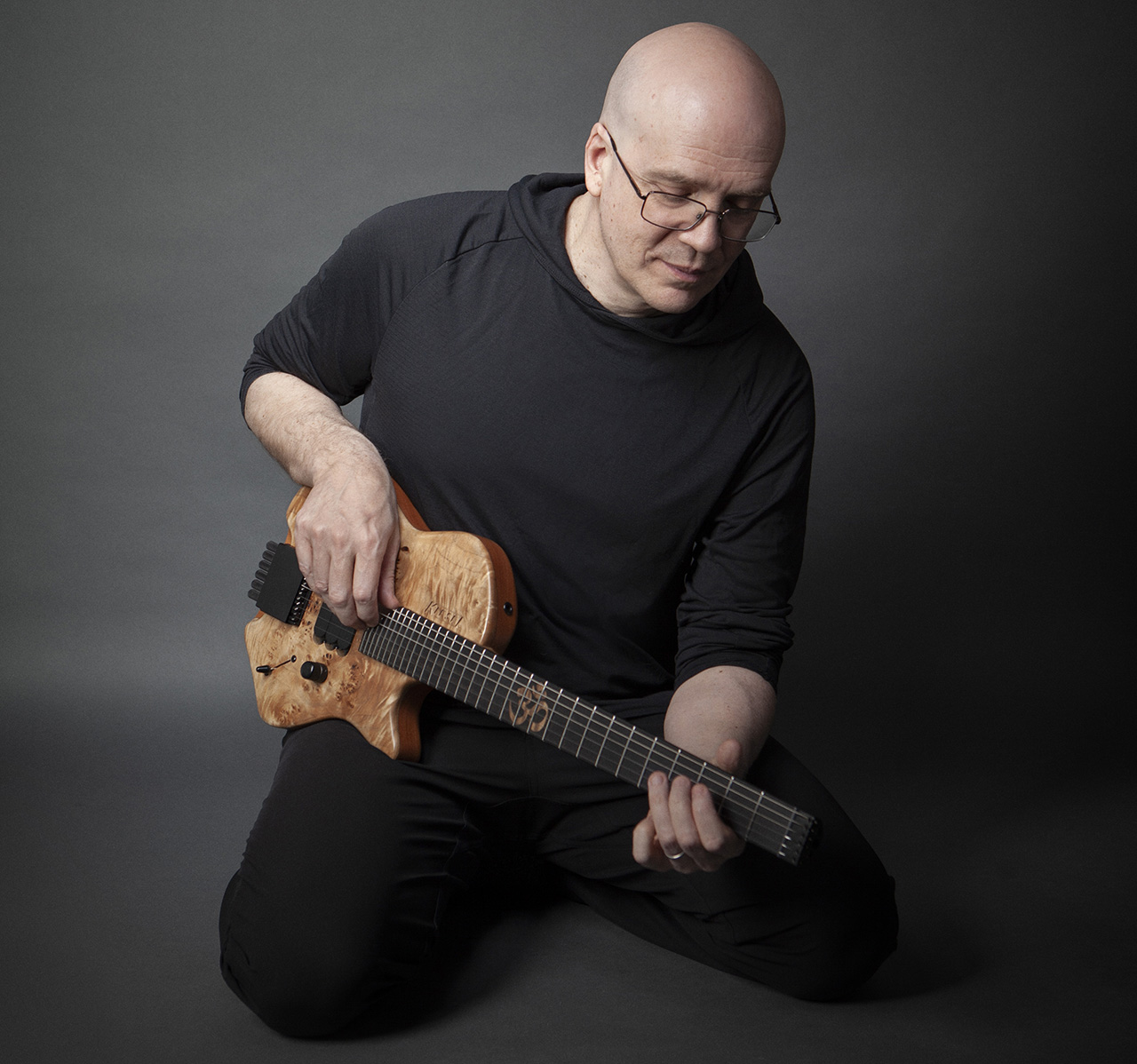“The idea of lead guitar is that there’s focus put on it, and during this period I just didn’t want any focus to be on me”: How Devin Townsend relied on his production process to deliver his new album from the depths of depression and grief
The first of a four-album cycle on death and rebirth involved a serious stack of gear and staggering new speakers – and the Canadian prog-metal maverick says the process was cathartic in its own way

PowerNerd opens to the exhilarating sound of Devin Townsend in full-bore maximalist mode – but the record soon takes a left turn. The intensity remains but is trained elsewhere, after the Canadian prog-metal maverick was blindsided by tragedy while writing the album.
“The process of making it was so complicated on a personal level,” he says. “We went through a bunch of things as a family that were very upsetting, and so what started as a straightforward party record ended up being this very strange record about death.”
He admits: “The whole thing kicked my ass, man. I think I’ve just been so divorced from emotions for so much of my life; then finally we had a couple of experiences that you can’t run from, and you can’t bury your head in the sand. You have to deal with them.”
Without offering detail, Townsend says grief and loss overwhelmed him to the point where the project was nearly abandoned. A cup of coffee was one of the reasons why it wasn’t.
“When I was really deep in the depression of it somebody came by and said, ‘Hey, you look like you could use a coffee!’” he says. “We went went out for a coffee and I remember thinking, ‘Yeah, it’s funny how the process of grieving also includes that resolution.’”
I might wake up in the morning, put on my Pro Tools system, write whatever comes into my mind, and then I document it
That was when the pendulum of emotion began to swing back the other way. “The theme is essentially the process of loss,” he says. “And the process of grief has stages, whether or not stages include acceptance or anger, resolution, or whatever. At the end of that process, it’s another day.”
Having opened PowerNerd with an anthem promising empowerment through metal, Townsend finishes it with the screwball surrealism of Ruby Quaker. In between you’ll find find wall-of-sound quasi-orchestral soundscapes plus melodies that modulate between the ecstatic and the elegiac. Throughout, the industrial power of Townsend’s electric guitar maintains the sense of awe and grandeur.
All the latest guitar news, interviews, lessons, reviews, deals and more, direct to your inbox!
PowerNerd is proof there are other ways to give a song a boost besides a guitar solo. That album will be followed by The Moth, Axolotl, and Ruby Quaker, to complete a tetralogy about death and rebirth – and Townsend uses every musical trick he knows to take us through that process.

You said a while back that abstract loops were your new obsession. Do those appear on on PowerNerd?
“I’d been writing abstract loops and documenting certain melodic things; just trying to sort of wrap my head around what this period of work entailed. PowerNerd ended up being this record that consisted of the more melodic ideas from during that period.
“I might wake up in the morning, put on my Pro Tools system, write whatever comes into my mind, and then I document it. So there’s a folder full of commercial things; a folder full of complex, orchestral things; abstract or straightforward things. Once I had the opportunity to start to compile those things into an identity, PowerNerd ended up being a lot more linear.”
At one point I recognized, ‘The lyrics I’ve written for this are now wildly inappropriate, considering what I’m going through with my life’
Dealing with grief, loss, and everything like that is not just about music. But those feelings end up in the music whether you like it or not.
“The only thing that I can draw from is personal experience – and the experiences of making this record really sideswiped me, man. It was really emotionally intense in a way that I hadn’t been prepared for. The visceral nature of all of a sudden being confronted with, frankly, 52 years of repressed emotions was really overwhelming.
“One of the things I found most interesting was when I got to a point where I said, ‘I can’t finish this.’ But we pushed through it. I guess if there’s any definition of the term ‘PowerNerd,’ it’s getting through the damn record, right?”
So anyway, back to guitars, what gauge of strings did you use?
“[Laughs] Ten through 52, man!”
But, seriously, when you talk about drawing on those experiences, it leads to different artistic choices. There is a blazing solo on PowerNerd because it needs one. That kind of solo would not make sense on Gratitude.
“It’s not deliberate, but I think that the decisions you make when you’re in a frame of mind will contribute to choices like that. The decisions you make are all based on your frame of mind. The idea, for example, of lead guitar is, by nature, there’s focus put on it and during this period I just didn’t want any focus to be on me.
“Even when there is a solo, like on Goodbye, it’s mixed as though it’s playing in the room next door. There’s a distance in that production choice that reflects the theme of the song. I was just like, ‘It needs a guitar solo, but I have no desire for it to be like a November Rain video,’ you know?”
Even while you’re guided by your state of mind, there’s still emotional logic – how and what you play have to follow that logic to bring the audience along.
“That’s it exactly. A lot of the decisions on album order and the lyrical slant – changing certain words on a subtle level – are all based on trying to guide the experience in a way that accurately summarizes the moment.
“That’s why I put Ruby Quaker at the end of the record. It was meant to end with Goodbye, but the emotional intensity of Ruby Quaker left me feeling blown apart. To leave an audience in that way is a very conscious decision.”

And here was me thinking you wrote Ruby Quaker after taking brown acid and listening to the Clancy Brothers…
“I wish! I wish I could rationalize that in my 50s, man. I can’t afford the time for the comedown!”
You wrote the music for PowerNerd in 11 days, but the lyrics took some more time.
“At one point I recognized, ‘The lyrics I’ve written for this are now wildly inappropriate, considering what I’m going through with my life.’ As an artist, you’ve got to be willing to listen to what what’s going on. If you’re able to say, ‘Listen, I’m struggling…’ that’s gonna be more relatable to an audience than than trying to pretend you have answers.
“No one fucking has answers! It’s insane. Any time I see people trying to sell books on how one should live their life, I think the arrogance is shocking.”
Any catharsis that I’ve felt from writing music is only to do with the fact that I’ve managed to face or work through things
Did these themes of death and loss shape all four records?
“It did. It’s not like you have a flash of inspiration and then the entirety of the process is laid before you. I was able to define it early – but what it ends up being and the ways in which it may change is a constant process of going down rabbit holes. It’s like trying to find a light switch in the dark.”
Can the process of searching for sounds that express an emotional epiphany have its own therapeutic quality?
“Maybe. Because any catharsis that I’ve felt from writing music is only to do with the fact that – as a result of the process – I’ve managed to face or work through things. None of the actual act of making a record is much more than pragmatic, really. But I do feel that the result of putting all that pragmatism into one place can yield an emotional experience that, in turn, is cathartic.”
Some of the sounds on this record are incredible. What did you use?
“A number of things! I used the Framus, the Kiesel, the Aristides [all three being Townsend signature models], the Fractal, the Helix, and the Quad Cortex. I used Bogren Digital plugins. I used a KSR head. I hooked up with an LA speaker company, Kii Audio, for staggering speakers that were actually so revealing that I found it difficult to mix.”
What were the sessions like?
“PowerNerd was a fairly straightforward process in terms of the recording. I used a DI and a Fractal while I was tracking the guitars; and when I was referencing what I was doing I was using a DI and then the Bogren Digital Rev C, which I thought was a really cool, quick way to get a good heavy guitar sound.
“But then I took those stems and I sent them to KSR Amplifiers, who’d very kindly built me an amplifier to try. They reamped it at their place, and what ended up going on to the record was a combination of these digital and analog sounds. I was very satisfied with it.
“In terms of actual gear, there’s always little things that you bring into a process, a new plug-in or something. But PowerNerd felt like a more military recording scenario, where it’s like you’ve got two days to rehearse, you’ve got two days to record… I didn’t spend time overthinking it.”
- PowerNerd is out now via InsideOut.
Jonathan Horsley has been writing about guitars since 2005, playing them since 1990, and regularly contributes to publications including Guitar World, MusicRadar and Total Guitar. He uses Jazz III nylon picks, 10s during the week, 9s at the weekend, and shamefully still struggles with rhythm figure one of Van Halen’s Panama.



